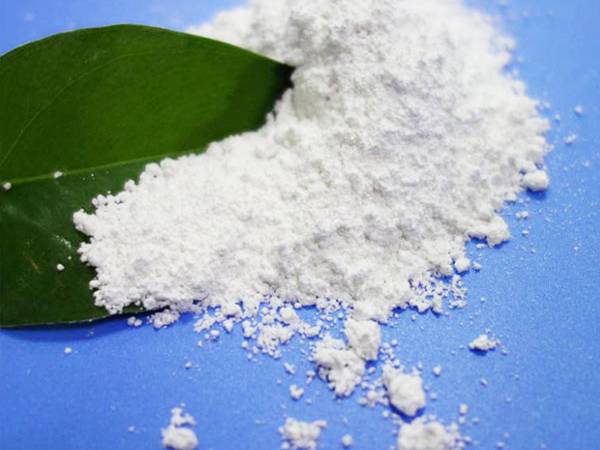



stable chlorine dioxide
Understanding Stable Chlorine Dioxide Uses, Benefits, and Safety
Stable chlorine dioxide (ClO2) is a versatile chemical compound that has garnered attention for its wide range of applications in various fields. Recognized primarily for its disinfectant properties, stable chlorine dioxide is increasingly utilized in water treatment, food safety, and sanitation processes. Unlike chlorine, which can generate hazardous by-products, stable chlorine dioxide maintains its efficacy without producing harmful residues, making it a preferred choice for many industries. This article delves into the properties, benefits, applications, and safety considerations surrounding stable chlorine dioxide.
Properties of Stable Chlorine Dioxide
Chlorine dioxide is a yellowish-green gas at room temperature but can be dissolved in water to create a solution that is more stable and easier to handle. One of the most significant advantages of ClO2 is its ability to act as a powerful oxidizing agent. It effectively kills bacteria, viruses, and fungi, rendering it a highly effective disinfectant. The stability of chlorine dioxide in solution allows it to remain active over time, giving it a longer shelf life than many traditional disinfectants.
Applications in Water Treatment
One of the primary applications of stable chlorine dioxide is in water treatment. It is commonly used for disinfection in municipal water supplies, helping to ensure that drinking water is free from pathogens and contaminants. ClO2 is particularly effective in breaking down biofilms and eliminating odor-causing compounds, which can enhance the overall quality and taste of water. Its efficacy against a wide range of microorganisms makes it a valuable tool in combating waterborne diseases.
In addition to municipal use, stable chlorine dioxide is also employed in industrial water treatment processes, including cooling towers, oil recovery, and pulp and paper manufacturing
. These industries benefit from ClO2’s ability to reduce scaling, corrosion, and the growth of harmful microorganisms, thus improving operational efficiency and safety.Food Safety and Sanitation
stable chlorine dioxide

Stable chlorine dioxide plays a crucial role in ensuring food safety and sanitation. It is widely used to sanitize fruits, vegetables, and meat products, effectively reducing microbial load without leaving harmful residues. The use of ClO2 in food processing facilities helps maintain hygiene levels, thereby minimizing the risk of foodborne illnesses. Furthermore, because it is less corrosive than traditional chlorine solutions, it poses fewer risks to food packaging and equipment.
Many food processors and manufacturers are increasingly adopting stable chlorine dioxide as part of their Hazard Analysis and Critical Control Points (HACCP) plans. By incorporating ClO2 into their sanitation protocols, businesses can enhance product safety while complying with stringent health regulations.
Benefits of Using Stable Chlorine Dioxide
The advantages of stable chlorine dioxide are numerous. First and foremost, it is a highly effective disinfectant that can eliminate a broad spectrum of pathogens. Its ability to operate in a wide pH range makes it suitable for various applications. Moreover, unlike chlorine, ClO2 does not produce trihalomethanes (THMs) or other harmful by-products, making it a safer option for water treatment and food sanitation.
Additionally, the use of stable chlorine dioxide often leads to lower overall costs. By reducing the need for multiple disinfecting agents and minimizing damage to infrastructure, businesses can streamline their operations and save money in the long run. The environmentally friendly nature of ClO2 also appeals to companies aiming to meet sustainability goals.
Safety Considerations
While stable chlorine dioxide is generally safe when used correctly, it is essential to adhere to appropriate guidelines and safety measures. Concentrated ClO2 can be hazardous, as it may cause irritation to the eyes, skin, and respiratory system. Proper training for personnel handling chlorine dioxide solutions is crucial to minimize risks. Furthermore, it is vital to ensure adequate ventilation in areas where ClO2 is used to prevent potential inhalation exposure.
In conclusion, stable chlorine dioxide is a powerful and versatile compound that offers numerous benefits across various industries. Its effectiveness as a disinfectant, combined with its safety profile and minimal environmental impact, makes it an invaluable tool in water treatment and food safety. As industries continue to seek more efficient and safer sanitation methods, stable chlorine dioxide is poised to play a critical role in promoting public health and safety.
-
Why Sodium Persulfate Is Everywhere NowNewsJul.07,2025
-
Why Polyacrylamide Is in High DemandNewsJul.07,2025
-
Understanding Paint Chemicals and Their ApplicationsNewsJul.07,2025
-
Smart Use Of Mining ChemicalsNewsJul.07,2025
-
Practical Uses of Potassium MonopersulfateNewsJul.07,2025
-
Agrochemicals In Real FarmingNewsJul.07,2025
-
Sodium Chlorite Hot UsesNewsJul.01,2025










